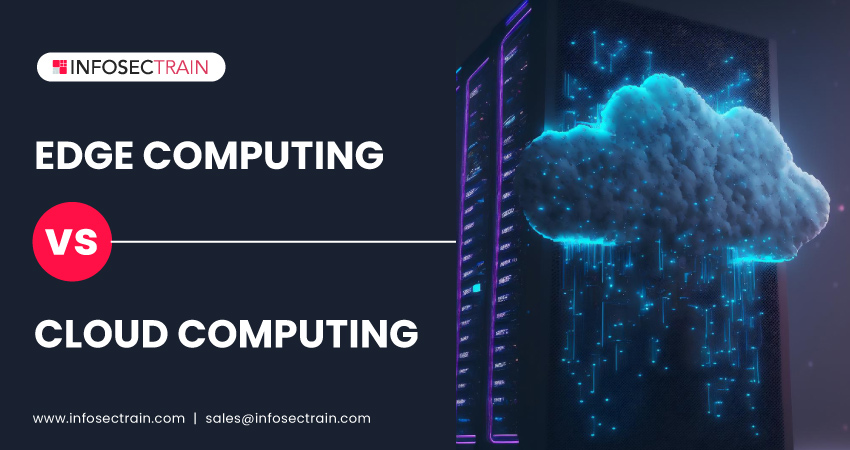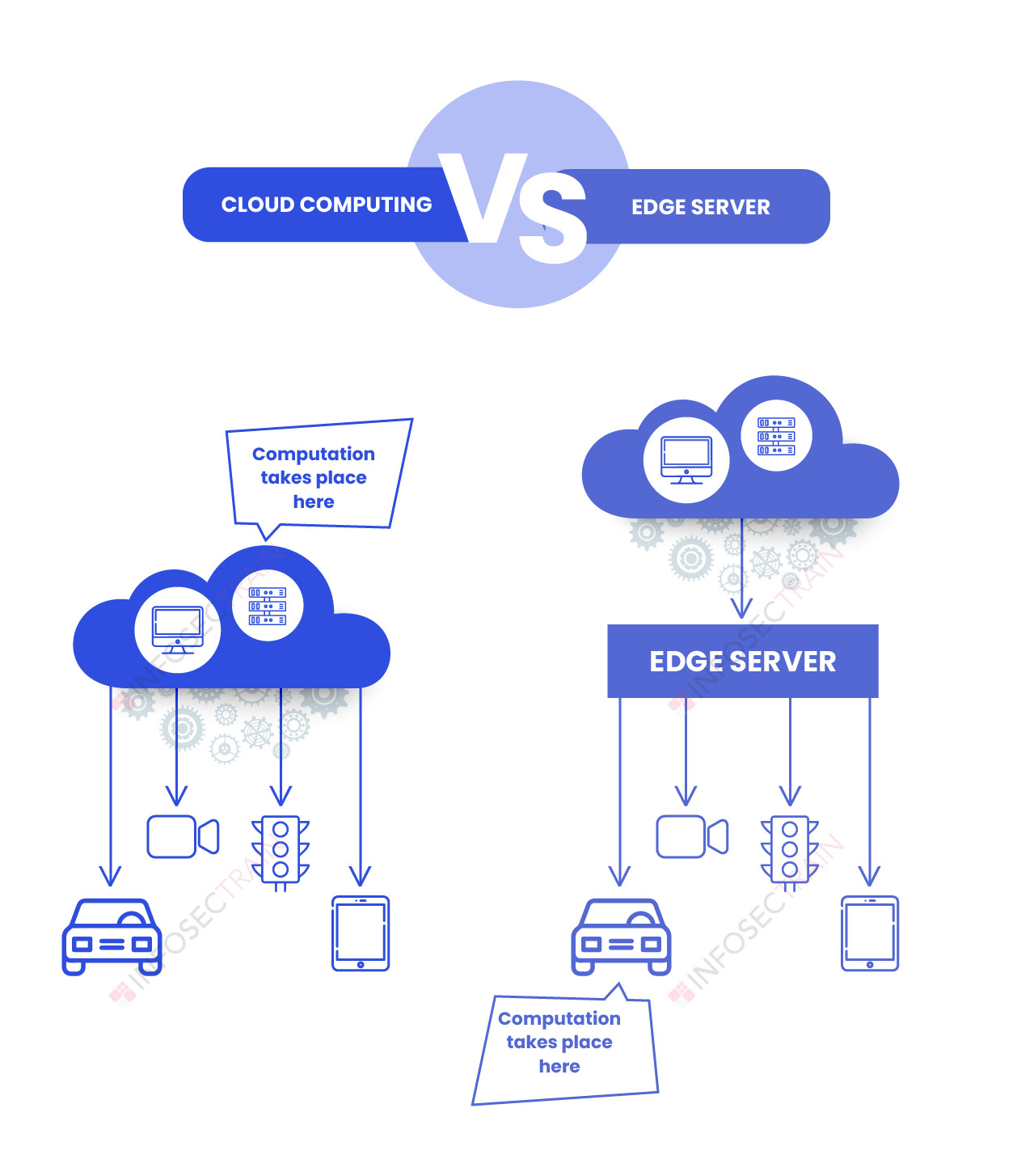Edge Computing vs. Cloud Computing
Cloud computing is a platform that enables businesses to host their private data on worldwide servers, allowing them to save data in the cloud and access it from anytime and anywhere in the world. Nowadays, businesses of all sizes, from small to large, use cloud computing to streamline operations, enhance flexibility, and scale their IT infrastructure. However, edge computing presents an alternative computing method with a lower latency time than cloud computing. This technology brings data storage and computing capabilities closer to the system or data source that requires them the most.

This blog aims to provide valuable information about cloud computing and edge computing, allowing you to understand their advantages and distinctions.
Table of Contents
Cloud Computing
Advantages of Cloud Computing
Edge Computing
Advantages of Edge Computing
Disadvantages of Edge Computing
Differences between Cloud Computing and Edge Computing
Cloud Computing
Cloud computing is a widely recognized technology field that leverages the Internet to manage and store data online through a network. It enables individuals and organizations to access, update, or modify data conveniently from anywhere and at any time. Cloud computing encompasses various services, including processing power, storage, servers, analytics, software development models, Artificial Intelligence, Internet of Things (IoT), and other software that can be accessed via the Internet. These services empower users to construct, deploy, or host applications on-demand, providing flexibility and scalability to meet their specific needs.
Advantages of Cloud Computing
Here are some advantages of cloud computing:
- Flexible and Cost-Effective: It offers flexibility in resource allocation and reduces upfront infrastructure costs with pay-as-you-go models.
- Reliable Service: It ensures minimal downtime, improved performance, and data protection, contributing to a more reliable and resilient computing environment for you and your organizations.
- Mobile Accessibility: Cloud computing facilitates mobile access to a greater extent.
- Capital Savings: Embracing cloud computing significantly cuts capital and operational expenditures for growing computer capabilities.
- Consistency: It provides consistency through centralized data storage, ensuring that all users access the same up-to-date information and applications.
- Maintenance: Cloud computing providers routinely conduct maintenance to enhance performance and security.
Edge Computing
Edge computing is an advanced iteration of cloud computing that provides a competitive edge. Its fundamental goal is that instead of executing all of its activities in the cloud, companies may now perform some on a local server, reducing latency and ensuring that whatever work the organization is doing on the server is completed quickly and easily. It supports Artificial Intelligence (AI) and 5G wireless technology in computers, allowing faster response times, lower latency, and easier maintenance. It also allows data to be analyzed, processed and sent at the network’s edge. Edge computing brings computer processing power to a physically created location where data is generated, such as IoT devices or sensors.
Advantages of Edge Computing
Here are some advantages of edge computing:
- Performance Enhancement: On the network’s edge, data collection, analysis, processing, and other actions are carried out locally.
- Faster and Real-time Responses: Data transit is removed or decreased due to data processing at the edge.
- Reducing Operating Costs: It uses less bandwidth and has a minor delay, so its operational cost is cheap.
- Enhanced Security and Privacy Protections: Edge Computing provides greater security and privacy protections because data is kept near the edge and away from centralized servers.
- Reliability and Robustness: When communication channels are delayed, intermittently available, or momentarily unavailable, Edge Computing continues to operate.
- Scalability and Versatility: The edge can be used to scale IoT networks without worrying about storage requirements.
Disadvantages of Edge Computing
Here are some drawbacks of edge computing:
- Security: Edge computing enhances security by lowering the amount of data, but it also creates security problems at each localized point of the edge network.
- Infrastructure Costs: For maximum performance and local storage demands, edge devices may require additional hardware and software, and costs can quickly increase.
- Data Loss: An edge device could accidentally misinterpret and delete crucial data.
Differences between Cloud Computing and Edge Computing

Edge and cloud computing are two diverse technologies that cannot be used together in their application.
| Cloud Computing | Edge Computing |
| It is used to process non-time-sensitive data. | It is used to process time-sensitive data. |
| It provides Internet-hosted remote servers. | It provides personal PCs or local servers. |
| It provides a robust Internet connection. | Its Internet connectivity is restricted or non-existent in remote regions. |
| Its gadgets are similar to PCs; they are not multifunctional computing machines. | It has sophisticated and specialized gadgets, which are advantageous. |
| It necessitates a less rigorous security strategy. | It necessitates a comprehensive security strategy that includes improved authentication techniques and proactive attack detection. |
| It has two cloud storage networks, Amazon EC2, and Google Cloud. | It takes place primarily on the system itself. |
Cloud Computing with InfosecTrain
Edge and cloud computing will contribute to the development of a new computing platform for businesses in various industries. Cloud Computing makes modern technology available over the Internet, whereas edge computing brings computers closer to the data source. For a comprehensive understanding of cloud and edge computing, join InfosecTrain and experience a terrific learning journey guided by our industry professionals.



 1800-843-7890 (IN)
1800-843-7890 (IN) sales@infosectrain.com
sales@infosectrain.com
 1800-843-7890 (India)
1800-843-7890 (India) 
